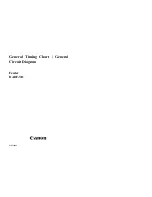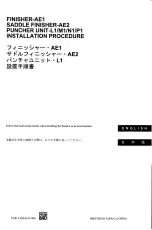
Installation and Operation
14
900-0227-01-00 Rev A
Freshening Charge
A maintenance or “freshening” charge should be given to batteries that have been in storage.
The freshening charge must be appropriate to the battery model. All charging should be
temperature-compensated (see below). With a three-stage charger, the voltages for each stage
are set as noted on page 12.
Notes on EnergyCell PLC Charging
The current requirements for the absorption and float stages are usually minimal; however, this
will vary with conditions, with battery age, and with battery bank size. (Larger banks tend to
have higher exit current values for the absorption stage, but they also have higher float current.)
Any loads operated by the battery while charging will also impact the requirements for the
charger, as the charger must sustain everything.
Not all chargers exit directly to the float stage. Many will enter a quiescent or “silent” period
during which the charger is inactive. These chargers will turn on and off to provide periodic
maintenance at the float level, rather than continuous maintenance.
Constant-Float Charging
“Constant-float” charging may be used with the EnergyCell PLC in backup power applications
where the battery bank is rarely discharged. When a discharge occurs, it is critical to recharge
the bank as soon as possible afterward. When charged with a constant-float charger, the
charger should be set to maintain the batteries at 13.5 Vdc per battery in a string (2.25 Vpc) at
room temperature. The batteries are considered to be fully charged when the cell voltage is
maintained at this level and the charge current has dropped to a low level over a long period of
time. In constant-float charging, it is critical to compensate the settings for temperature
.
Temperature Compensation
Battery performance will change when the temperature varies above or below room temperature
(77°F or 25°C). Temperature compensation adjusts the charging to correct for these changes.
When a battery is cooler than room temperature, its internal resistance goes up, the voltage
changes more quickly, and the charger reaches its voltage set points more easily. However, it
will not deliver all the required current and the battery will tend to be undercharged. Conversely,
when the battery is warmer than room temperature, its internal resistance goes down, the
voltage changes more slowly, and the charger does not reach its voltages as easily. It will
continue to deliver energy until the set points are reached, but this tends to be far more than
required. The battery will be overcharged. (See
Improper Use
.)
To compensate for these changes, a charger used with the EnergyCell battery must have its
voltages raised by a specified amount for every degree below room temperature. They must be
similarly lowered for every degree above room temperature. This factor is multiplied if additional
batteries are in series. Failure to compensate for significant temperature changes will result in
undercharging or overcharging which will shorten battery life.
EnergyCell PLC Required Compensation
The factor is 5 mV per cell (0.03 Vdc or 30 mV per battery) per degree C above or below room
temperature (77°F or 25°C) when the battery is regularly cycled. The factor is 3 mV per cell
(0.018 Vdc or 18 mV per battery) per degree C in constant-float applications.






































